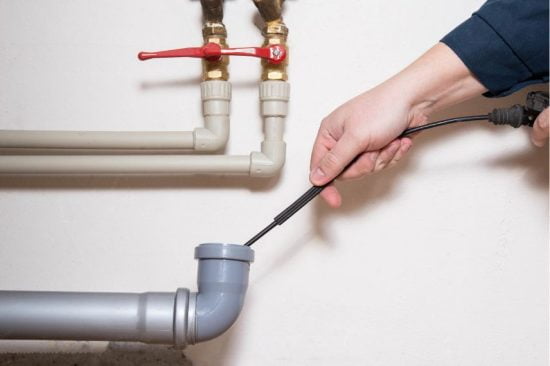Sewer lines, often tucked away and out of sight, play a pivotal role in our daily lives. Think about it: every time you use a faucet, flush a toilet, or run the washing machine, the wastewater generated navigates through these pipes. These critical pathways, which we rely on so heavily, need proper care and attention to maintain sewer line efficiency.
While we appreciate the modern conveniences of indoor plumbing, it’s easy to forget about the infrastructure that makes it all possible — until, of course, a problem arises. Properly maintaining sewer lines is not just about addressing issues but ensuring their optimal functionality day in and day out.
Many homeowners find themselves ill-prepared for the challenges posed by a blocked or damaged sewer line. The repercussions can range from the mild inconvenience of slow-draining sinks to more severe issues like sewage backup. Such events not only disrupt daily life but can also present health hazards and result in expensive repair bills. Furthermore, a malfunctioning sewer system can negatively impact the environment, contaminating local water sources and harming ecosystems.
Given their importance, it’s surprising how easily these vital systems can be taken for granted. To maintain a sewer line effectively, a proactive approach and a bit of knowledge are essential. The first step is understanding the necessity of maintenance. Just as we service our cars to prevent unexpected breakdowns, our sewer lines too require regular attention to operate at peak efficiency. By prioritizing how to maintain sewer lines, homeowners can ensure longevity and efficiency, enjoying the peace of mind that comes from a well-maintained system, free from unforeseen disruptions.
Here are 8 tips on maintaining the efficiency of your sewer line:
1. Avoid Dumping Grease Down the Drain:
One of the most common reasons for sewer blockages is the accumulation of fats, oils, and grease (often referred to as FOG). When you dump grease down the drain, it cools, solidifies, and can latch onto the sides of pipes, creating blockages. Instead of pouring them down the sink, collect them in a container and dispose of them in the trash. Drains must be timely cleaned with home techniques or either seeking to proper drain cleaning service from a plumber to ensure the clogging doesn’t affect the plumbing system,
2. Mind What You Flush:

Non-biodegradable materials like wipes (even those labeled ‘flushable’), feminine products, and paper towels can cause clogs in the sewer line. Only human waste and toilet paper should be flushed down the toilet. This simple step can help maintain your sewer line for the long haul.
3. Install a Sewer Line Cleanout:
A sewer line cleanout is an access point in the sewer line that allows for easy clearing of blockages. If your property doesn’t already have one, consider installing a cleanout to make future maintenance more manageable. A cleanout can also act as a relief point if a blockage causes sewage to back up, directing the overflow outside rather than into your home.
4. Plant Trees Away from the Line:
Tree roots are notorious for infiltrating sewer lines, causing blockages and damage. When landscaping your property, it’s crucial to know where your sewer line runs and ensure that trees are planted at a safe distance. If trees are already established near your line, regularly check for root intrusion and consider root barriers or removal if necessary. Tree roots can also result in sewer line damage which must be sorted out with professional sewer line repair and replacement.
5. Consider Sewer Line Protection Products:
Several products on the market can help maintain sewer line health. Enzymatic drain cleaners, for example, are a safe alternative to harsh chemical drain cleaners. They break down organic material in the pipes without corroding them. You can find such products at specialty stores or trusted online vendors like Rotorooterca.
6. Regular Drain Cleaning:
Just as you’d clean your home’s interior, your sewer line occasionally needs a thorough cleaning. Techniques like hydrojetting can clear away build-ups of grease, silt, and other debris. Regular drain cleaning ensures that wastewater flows smoothly and helps maintain sewer line integrity.
7. Be Cautious with DIY Repairs:
While it might be tempting to address a minor blockage or issue yourself, DIY repairs can often do more harm than good if not executed correctly. Instead, consult with a professional or do thorough research, especially when using chemicals or tools, to avoid causing inadvertent damage.
8. Regular Inspection:
Just as with any household system, the key to longevity and efficiency is routine inspection. Scheduling regular sewer line checks can help detect potential problems before they become significant issues. The sewer line inspection requires the plumbing experts to use specialized sewer inspection cameras to inspect the inside of pipes, ensuring there are no blockages or damage.
Conclusion
To maintain a healthy sewer line, invest in the long-term health and functionality of your home. Regular inspection, mindful habits, and routine cleaning can save you from the headache of significant repairs or replacements. When in doubt, don’t hesitate to seek expertise. Companies like Roto-Rooter specialize in these services, ensuring your home’s plumbing runs smoothly for years to come.